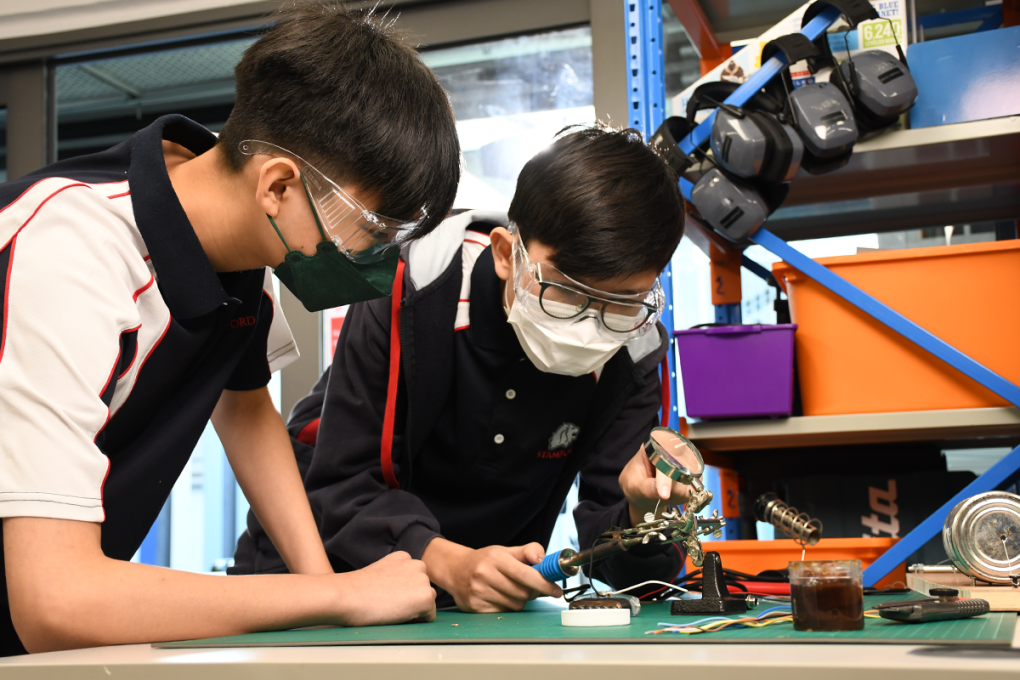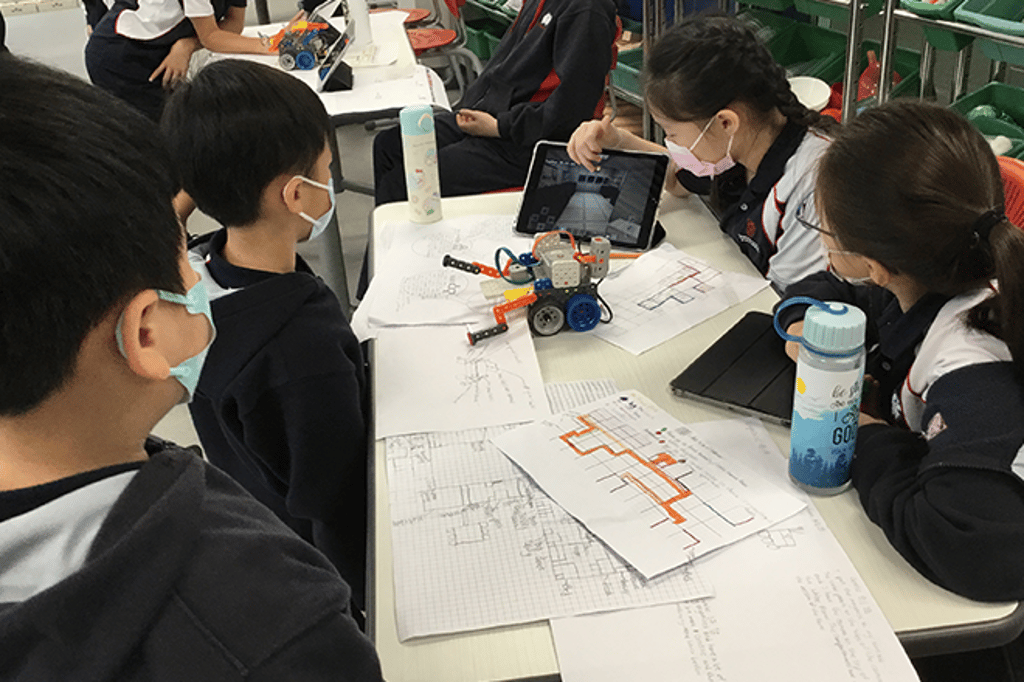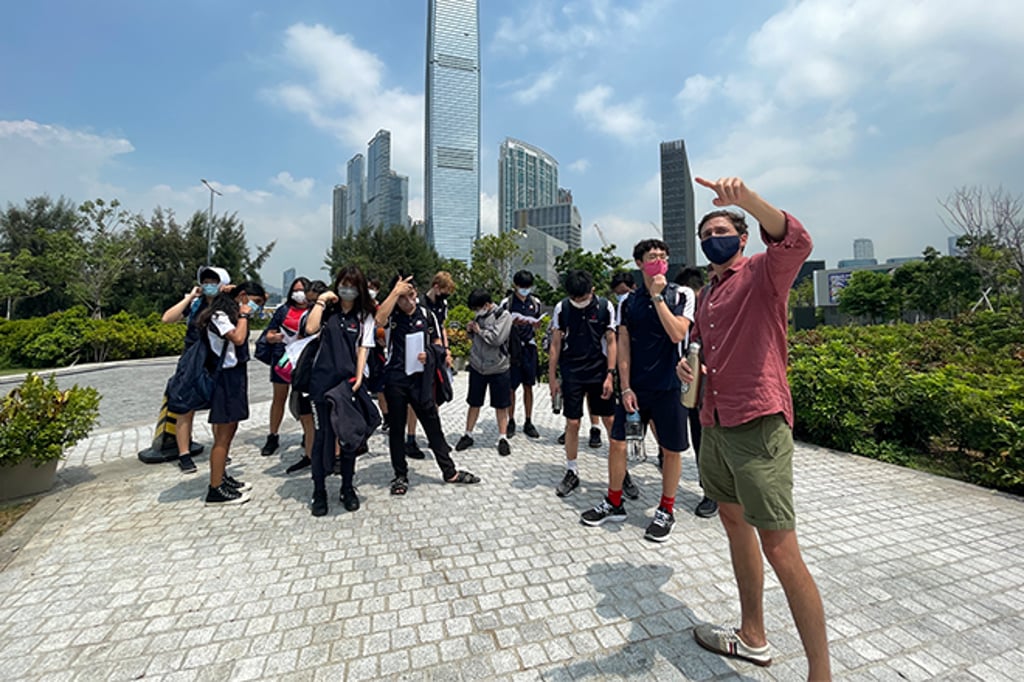Innovation: The DNA of Modern Education

[Sponsored Article]
Innovation is a global focus in an ever-changing world. The past two years of the pandemic have only highlighted this critical need for novel ideas more than ever. Education has evolved to position students as successful leaders and changemakers of tomorrow. No longer can students focus on subjects in isolation. Students need to work across multiple disciplines and be inspired to become future innovative leaders. The transformation of learning approaches develops students with the skills they will need to be successful in today's careers by fostering multiple social-emotional skill sets and technological competencies.

At the core of a Stamford education are four I's-Innovation, International, IB-Centric, and Individualized. Innovation lives in the Stamford American School Hong Kong DNA through the embedded STEMinn curriculum (science, technology, engineering, math, and innovation), the Cornerstones hands-on project-based mentorship program, and experienced faculty leveraging the latest technologies and tools to deliver future-proof education.
In 2020, the World Economic Forum published data on the most in-demand skills, demonstrating a need for technological literacy combined with various higher-order thinking skills. The STEMinn program at Stamford builds these core skills at every grade level using age-appropriate technology and integrating the core units of students. Hands-on and project-based, the students must collaborate, problem-solve, and display resilience as they work to achieve challenging and exciting outcomes.

In addition to the core units, students are stretched each year by two innovation-focused project weeks: "Mission Inspire" and "Sustainable Stamford." Students from Pre-primary to Grade 12 focus on a school-wide theme to encourage knowledge sharing and collaboration that builds a community of innovators across grade levels. Students have delivered unique projects during Sustainable Stamford (focusing on sustainability), including underwater vehicles with embedded AI technology to track ocean garbage and cultivate alternative food sources to combat food scarcity.
During Mission Inspire, which encompasses a variety of inspiring themes, Grade 10 students explored the "diddley bow" that influenced the development of the blues. After devising a plan, measuring, and prototyping, students constructed their final product with a wide range of tools and incorporated electrical transduction, and tested their final electric bows, tweaking a necessary. This project demonstrates how a simple machine can bring about historical change while allowing students to experience the design cycle firsthand.

Learning from Industry Experts
The Cornerstones Program inspires Grade 9 and 10 students by pairing them with industry experts to learn firsthand from their work experience while growing each student's portfolio and confidence. Students undertake four unique semester-long opportunities for course credit. Students showcase a culminating project supported by a faculty advisor each semester fully integrated into the curriculum.
This year, Stamford offered students eight project options: architecture, future-focused design thinking, e-commerce entrepreneurship, game design, journalism, student leadership, technical arts, and visual art.
Some of the student projects included redesigning Millennium Plaza in Sheung Wan to improve the use of space and sustainability. In the AI stream, one student invented the concept of a "VendAI" machine that diagnoses and dispenses medical treatments to people living in rural areas where medical facilities are not readily accessible. “You can really find your passions through the Cornerstones Program! In my recent Cornerstones project about trends that will shape our future, I had the pleasure of working with a different group of schoolmates to generate new ideas for a skit on AI and climate change, which really challenged me to be more communicative, collaborative and creative.” shared Mike Y, Grade 10 Stamford American School student.

Innovative Teachers
The Cornerstones Program inspires Grade 9 and 10 students by pairing them with industry experts to learn firsthand from their work experience while growing each student's portfolio and confidence. Students undertake four unique semester-long opportunities for course credit. Students showcase a culminating project supported by a faculty advisor each semester fully integrated into the curriculum. This year, Stamford offered students eight project options: architecture, future-focused design thinking, e-commerce entrepreneurship, game design, journalism, student leadership, technical arts, and visual art.
Some of the student projects included redesigning Millennium Plaza in Sheung Wan to improve the use of space and sustainability. In the AI stream, one student invented the concept of a "VendAI" machine that diagnoses and dispenses medical treatments to people living in rural areas where medical facilities are not readily accessible.
Innovative Teachers
Faculty are the most significant predictor of student success at school. Staff receives support from an in-house team of STEMinn and educational technology experts, plus the latest technologies to deliver innovative teaching and learning. As part of the Cognita Schools Group of 90+ schools globally, teachers can also share the latest cutting-edge teaching and learning practices to continue innovating their practice. Being surrounded by a culture that embraces innovation, students are inspired and access the best available modern teaching and learning.
Innovation also leads to more effective teaching. Stamford staff recently designed an all- in- one dashboard, "Perspectives," that collates multiple student data points to revolutionize data-driven education. At a glance, teachers immediately spot challenge and growth areas to personalize learning quickly and effectively. The system creates a "student profile," which provides a view of the whole child that is also parent-friendly and draws upon academic achievement, growth, and success drivers, including well-being, to truly support all areas of student growth using advancements in technology.
"Data is one of our greatest tools to understand students; by making it easy to collate, analyze and share, our teachers can spend more time using it to support student needs rather than trying to work across multiple systems. If we encourage students to innovate, we must also continue to do so ourselves to drive the best learning outcomes for students." shared Michael Galligan, IB Coordinator and a vital driver of the Perspectives data project.
The Result?
Student growth has not suffered even during peaks of the ongoing pandemic; students at Stamford continued to perform 15% above the global average in the Measures of Academic Performance Assessment (MAP). The MAP assessment measures literacy, math and sciences showing that an innovative approach to teaching and learning can lead to fantastic outcomes whether physically or virtually in the classroom.
As a school at the forefront of 21st learning, Stamford will continue to evolve education practices to meet the needs of a changing world.